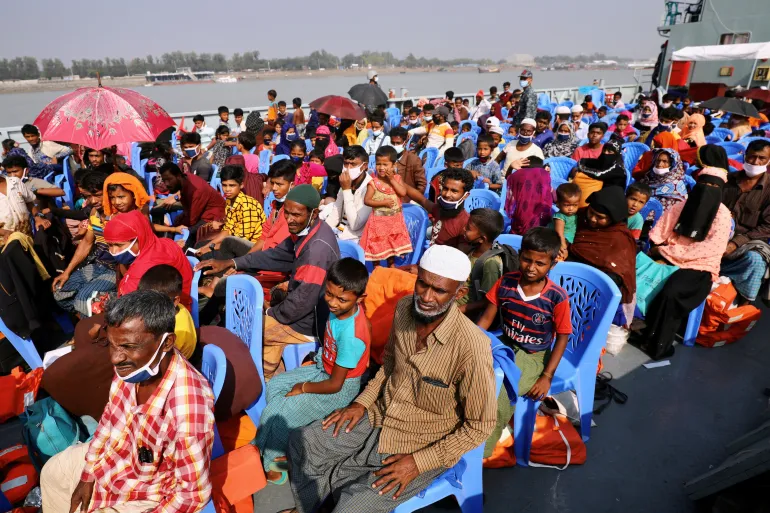Known as the land of Golden Pagodas, Myanmar, formerly known as Burma, is one of the famous tourist spots renowned for its shimmering temples grown from its rich and vibrant culture. Situated in the Indochina peninsula in Southeast Asia, Myanmar is nestled between its neighboring countries of Thailand, Laos, India, China, and Bangladesh. But behind its extravagance and beauty is an ugly ongoing crisis brought on and maintained by a persisting unstable conflict. Only having gained its independence on January 4th, 1947, the stunning nation has been checkered with colonization, conflicts, and most recently, a coup d’état.
The dawn of 2021 marked a tragic turning point in Myanmar’s history, as the military junta orchestrated a bold coup on February 1st, effectively ending the country’s fledgling democratic progress. The democratically elected administration of Nobel laureate Aung San Suu Kyi and her National League for Democracy party was overthrown in the coup, plunging the country into an upsetting cycle of human rights and humanitarian abuses. Since that fateful day, Myanmar has developed into a disturbing tableau of injustice, with the Tatmadaw, the nation’s military government, committing egregious abuses against its own citizens. Most notably, the Rohingya people borne a substantial portion of the aftermath. Known by the United Nations as the world’s most oppressed minority, the Rohingya possess a history spanning thousands of years in Myanmar, a nation that is marginalizing them. With the coup, many have continued to flee the country to avoid egregious human rights abuses and neighboring countries, particularly Bangladesh, have become havens for those seeking refuge. However, the humanitarian predicament the Rohingya people face is not isolated from the broader environmental context but instead, it is intricately intertwined with the larger environmental landscape. This region, which has witnessed their persecution, also contends with environmental adversities, including the impacts of climate change. Consequently, the Rohingya people, already subjected to persecution, are now ensnared in a complex interplay of human rights abuses and environmental vulnerability. This confluence serves as a stark reminder that the intersections of human rights, conflict, and environmental challenges can profoundly shape the trajectory of societies, underscoring the urgent need to address both the immediate plight of vulnerable communities like the Rohingya and the long-term impacts of climate change.
Deforestation and Habitat Destruction
Thousands of acres of a lush, green, and hilly area once inhabited by wild elephants, now stripped of its life and barren. The flattened expanse of land is now known as the Cox’s Bazar in Bangladesh and is home to around one million Rohingya refugees fleeing from the horrors of the genocide that awaits them back home. As the displaced populations seek refuge in an already fragile ecosystem, their presence are exacerbating an already delicate and vulnerable setting raising concerns of environmental degradation even further. For example, around 2500 hectares of forest land has been
lost due to the clearing of land for the creation of makeshift camps and settlements since 2017, with that number projected to increase each year. Not only is the rapid deforestation a disruptor to local ecosystems, displacing native plant and animal species, but it also diminishes the delicate biodiversity of the area. Moreover, another substantial consequence is the soil erosion and landslides both of which are already common in the area. Without the stabilizing effect of vegetation, the exposed soil becomes vulnerable to erosion by wind and rain. This erosion leads to land degradation, reduced soil fertility, and increased susceptibility to flooding and landslides.
Soil and Water Pollution
While deforestation has captured a significant portion of attention in the context of the Rohingya climate crisis, there exists a quieter yet immensely impactful issue that demands recognition – soil and water pollution. Due to the innate lack of proper infrastructure in the refugee camps, there are an abundance of complications which arise resulting in soil and water pollution. For example, poor waste management and sanitation practices not only constitute health hazards to those living in the camps, but also increases contamination to local water sources. The UN SDG 6: Clean Water and Sanitation outlines that the access to safe water, sanitation and hygiene is the most basic human need for health and well-being. Tragically, this negligence is a reality for the Rohingya, where the lack of clean water exacerbates the plight of these vulnerable populations. It is imperative to recognize that these marginalized groups often not only encounter oversight but also face active discrimination when it comes to accessing essential water and sanitation services, further compounding their challenges.
Conclusion
The Rohingya crisis exemplifies how climate change can endanger the most vulnerable and underprivileged groups. Analyzing this situation from an environmental perspective rather than solely a humanitarian one illustrates the deep link between climate change and conflict. As Rohingya people flee violence, they encounter not only a humanitarian crisis but also environmental degradation. The lush landscapes of Myanmar have been stripped bare in Cox’s Bazar, Bangladesh, where Rohingya refugees seek refuge. Rapid deforestation disrupts ecosystems, exacerbates soil erosion, and threatens delicate biodiversity. Furthermore, soil and water pollution plague refugee camps, compounding the challenges faced by marginalized groups. This silent issue, intricately intertwined with larger conflicts and environmental concerns, underscores the urgent need for comprehensive solutions that address both human rights and ecological sustainability.
kr

